Found among the papers of my great-grandmother, Louisa Wade Wetherill (1877-1945), was a stack of Navajo stories she had translated, transcribed, and preserved. Living with the People for most of her adult life, Louisa greatly respected their character, insights, wisdom, and way of life. Her Navajo friends respected her, too, and affectionately gave her a new name—‘Asdzaa ts’osi, or Slim Woman. (For more on her, see my article “Slim Woman of Kayenta” in the February/March 2018 Canyon Country Zephyr.)
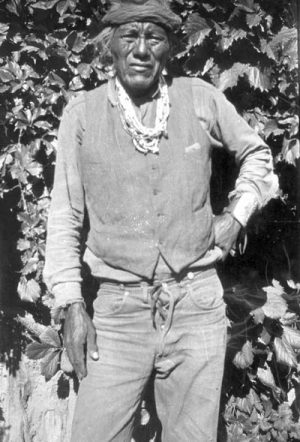
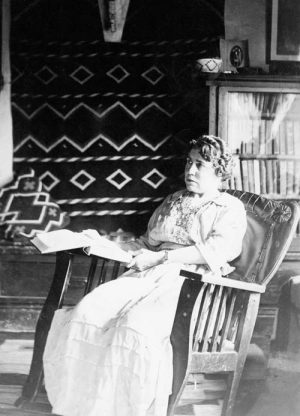
Some of the stories she recorded are non-fictional, such as the oral history of an elderly friend named Wolfkiller (ca. 1855-1926), which finally was published in 2017 in the book Wolfkiller: Wisdom from a Nineteenth Century Navajo Shepherd. (For more on him, see my article, “The Wisdom of Wolfkiller: A Nineteenth Century Navajo Shepherd and Sage” in the October/November 2018 Canyon Country Zephyr.) Other stories, which probably were also told her by Wolfkiller, are fictional and were carefully crafted to teach important life lessons to both children and adults. Many of the themes and situations are recurrent in other documented versions and were undoubtedly authored generations ago and passed down orally.
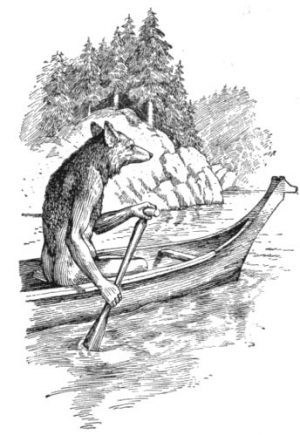
A familiar character in the stories of the Navajos—as well as those of many other traditional cultures—is the Coyote. Wily, highly intelligent, and often troublesome, he was commonly known as the Trickster.
Louisa documented a tradition that exemplifies how the People reacted to some of their encounters with real coyotes.
“If an Indian happens to be near a coyote when he cries, and the coyote would not bark if he knew the person was there, a ceremony must be conducted to dispel the evil. The Navajo must go to where the coyote was standing and place a white bead in the track of the right fore-foot and a pink shell bead in the track of the left fore-foot. The white bead is to represent the dawn and the pink one to represent the sun rays. This is done when a coyote barks nearby, and just at or after sunset, or just at dawn or sunrise. And the same ceremony is used if a coyote follows a Navajo as a dog would follow.“
The following stories, in Louisa Wetherill’s words, are some examples of the coyote lore and history she learned from Wolfkiller and possibly others. They reflect a splendid level of creativity and witticism on the part of their creators, and one can imagine they were told with a smile and twinkle in the eyes.
Introduction
By Louisa Wade Wetherill
Out on the Navajo Reservation, far away from the inhabitants of any white man, there lived a little Navajo boy. He went with his grandfather out in the hills every day to herd the sheep, and his grandfather would tell him stories of how the animals and birds and insects and flowers were made, how each one got his coat and other markings, how they talked to each other, about their quarrels, and the peace-makers among them, for there was always someone who came to make peace. When this little boy grew up, all the children about the hogan and camps gathered around him to hear the stories he had to tell. He was an old man when he told me the stories you will read here.
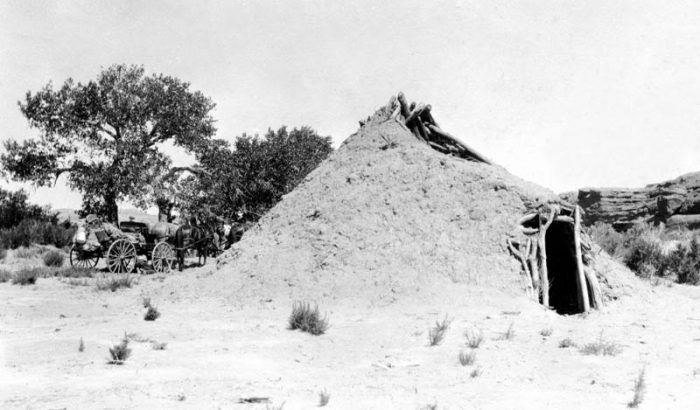
The Stars
The first man, Utsay hosteen, sat making the stars to put up into the heavens one day. He worked a long time and became very tired. He placed Del gay, or Pleiades. Then he placed Tson et so in front of Pleiades, then Tso hot see hat zee, the Cow. He was so tired, he could not work any longer, and he took a walk.
Just as soon as Utsay hosteen left his work, the Coyote came up and admired the stars and thought they were beautiful. He said, “I wonder where he got them.”
Then the Wind said, “They are the fire of the lightning. Utsay hosteen made the lightning of fire and the sun, and he made the moon of live coals.”
Then the Coyote (they called him at that time Utsay hashkee, or the first to get angry) looked and looked at them. Then he stole the big star—the morning star—and held it between his toes. Then a gust of wind came along and scattered the other stars.
So, when Utsay hosteen came back to resume his work, he found that it had been spoiled. He asked the Coyote, who was standing there, “Why did you spoil my work?”
The Coyote replied, “Why did you leave your work before it was finished?”
Utsay hosteen answered and said, “Do you not know that I have many other things to do besides making the stars? I have the rain to look after, and the seeds, and many other things. And when I do not look after all of the land, there is no rain on what I do not look after. That is the reason it only rains in strips. But I must get to work.” He began to look for the stars. He found all of them except the big one. He then asked the Coyote, “What did you do with the big star?”
Then the Coyote became angry and asked, “How should I know where your stars are? A big gust of wind came along and scattered all of the stars, and he must have taken the big one.”
Then Utsay hosteen called Jaa abani, the bat, to him and said, “My son, go to the house of the Little Wind and ask him if he has my star.”
Jaa abani went and asked Nil-clue, but Nil-clue became angry and said, “Why do you ask me for the star? I did come by when Utsay hosteen had his stars laid carelessly on the ground, but I did not take any of them. Why should I want any of them?”
Jaa abani went back and told Utsay hosteen what Nil-clue had said. Then Utsay hosteen told Jaa abani to get the Coyote and bring him to him. The Coyote did not want to come, but after Jaa abani had asked him three times, he finally consented and went to where Utsay hosteen was waiting for him by the stars. Utsay hosteen again asked him where the big star was, and he said, in a doubtful tone, “Boies hula,” or, “I don’t know.”
Then Utsay hosteen said, “Here is a smoke. Let us smoke, and then you can tell me where my star is. I need the star very much, so you must tell me.”
The Coyote took the smoke which Utsay hosteen had given him and put it in his mouth. Then he thought he would break off a piece of the big star to light it with. He thought he could do it without being discovered, so he tried to break it. But it fell from his hand, and a great fog arose from it.
So Utsay hosteen discovered it and said, “See, you cannot deceive me.” So he got his big star back, but a small piece fell on the wrist of the Coyote.
Coyote said nothing about this, but he thought, “This I will leave on my wrist so I will always have a light of my own.” That is what the little place is on the foot of the coyote.
Just at the time the Coyote got the piece of star placed to his satisfaction, the Wildcat, a bobcat, came up and he saw the piece of the star on the Coyote’s wrist. “Please give me a small piece of your fire,” he pleaded.
But the Coyote said, “No, I need all I have.”
The Wildcat asked again and again. Then, as the Coyote would not give him any, he became angry and struck at the Coyote. Then the Coyote struck him in the face and mashed his nose flat and made his eyes bulge out. That is the reason the wildcat has such a short nose and big eyes.
Then the Wildcat caught the Coyote’s tail and pulled it out until it was very long. And the Coyote struck the Wildcat on the tail and it broke off. That is why the wildcat has such a short tail.
Then the Wildcat caught the Coyote by the nose and pulled it out very long, and then he caught the Coyote by the back of the neck and stretched the hair out until it was very long. And this is the reason the coyote has such long hair on his neck.
Then the Coyote said, “Let us not fight anymore. We both have some defects from this fight, but I am willing to let you go and never look badly toward you again if you are willing to do the same. There is no reason why we should not be friends, even if you did stretch my tail out until it is very long, and stretch my nose until it is very pointed, and pull my hair up on the back of my neck until it is very long.”
Then the Wildcat said, “Very well, my friend. We will be friends, even if I have no nose, and my eyes are bulged until they are so large and I have no tail. It is as you say—we both have some defects.”
Then the Coyote said, “I will tell you what I will do. I will give you a little bit of my fire. If you will sit down here on this rock, I will fix you up.” So the Wildcat sat down on the rock, and the Coyote scraped some of the fire off of his foot with a sharp stone and painted a line underneath the Wildcat’s eyes. That is why the wildcat can see so well at night and his eyes shine in the dark. The little greyish red line under his eyes is the star dust.
Then the Coyote took some porcupine quills from his pocket, and, with some more of the star dust, he stuck one on each side of the Wildcat’s mouth, just at the corners. “This,” he said, “will be for you to feel with. And now you can bewitch people if you care to.” These are the stiff hairs on either side of a wildcat’s mouth among the other whiskers.
Then the Coyote and the Wildcat went their ways. They had not gone far when two boys met them and shot at them with their bows and arrows. The animals began to flee, but the Wildcat could not run very fast. The boys kept shooting at them and saying, “Hurry, your legs are not strong.”
The Wildcat could not run anymore but went along very slowly. The Coyote turned and saw him, and he said, “Try to run like I do by jumping first with your head to the right and your tail to the left, and then with your head to the left and your tail to the right, or, in other words, twisting from side to side.”
The Wildcat tried this but could not do it. He would have been killed, as he was so very tired, if Utsay hosteen, the first man, had not come to his rescue just then. He told the boys, “My sons, don’t shoot at him anymore. He will be very useful someday, as he will be used as food and many other things.”
Then the boys said, “Very well, my father. We will not shoot anymore.”
Then Utsay hosteen said, “He will make very good food for the Navajos when there is nothing else to eat, as he gets very fat. And the fat can be used as medicines. Then his head can be skinned, and the skin used as a war bonnet. You must leave the ears and nose and whiskers and eyes on it, of course. This will not be large enough for a hat, but you can cut small triangular pieces out of the body part of the skin and put them in. The triangular-shaped pieces will make it fit better, and they will represent rain clouds. The star dust is under the eyes. This will represent light, so you will be able to know where the enemy is before he sees you. And the whiskers will help you cast a spell over the enemy and make him less powerful. The other parts of the skin can be made into gloves to keep the hands warm. A young coyote must be caught, and some of this star on his foot scraped off and mixed with glozlie, or fuller’s earth, and this put on the palm of the glove to give speed and also light to the arrow as it goes from the bow. Then some of the skin can be used as a collar to keep you warm when it is cold. Now, if you had killed the Wildcat, there would have been no more wildcats, and it would have been a great loss.”
That is the reason the Navajos used to make their war bonnets of wildcat skin—because Utsay hosteen told them such a hat would help them.
When the Wildcat saw that the boys were not going to bother him anymore, he lay down in the shade of a rock and fell asleep. He was so very tired, he slept so soundly that a porcupine who came along and tried to awaken him could not do so. The porcupine went to a pinyon tree nearby, got some gum from it, and came back to where the Wildcat was asleep. He put spots all over the Wildcat and made his tail striped. So the wildcat has stripes on his short tail and spots all over his body.
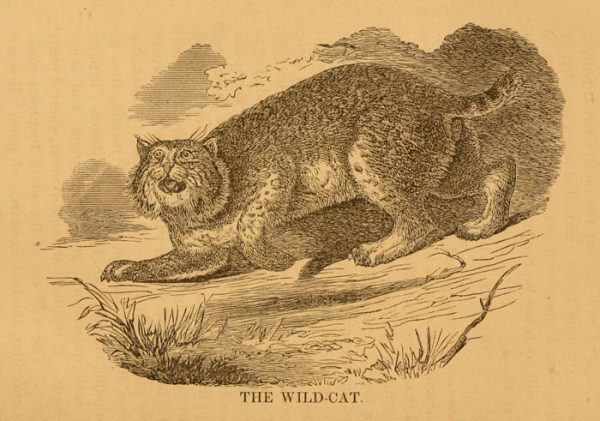
The Coyote’s Fight with the Spiders
Years and years ago, Hosteen mahie, Mr. Coyote, lived at the top of a high, rocky ridge. His house was reached by a long, winding trail that started at the bottom of a deep arroyo. In the bottom of this deep arroyo lived Asthon nasjaie, Spider Woman, with her many children. Those children and the children of Hosteen mahie used to play together nearly every day.
One day the spider children were playing in the tall grass on the bank of the arroyo, and the coyote boy came down to play with them. He came out of the house and down the trail into the tall grass and commenced to stumble around and bump into things as if he were blind. But he was not—he was only pretending. The little spider boy laughed and called out, “Oh, looky, looky, the coyote boy is blind and can’t see what he is running into.”
This made the coyote boy angry, for he was just pretending. He could not see that the spider boy was also joking, and he said, “Shame on you. You are lame, your legs are broken and very ugly.” It promised to be a good quarrel, but it was supper time and they had to run home.
When the spider boy reached home, he told his parents that the coyote boy had called him “a broken legged, wide headed, ugly thing.”
This made his mother, Asthon nasjaie, rather angry, and she said, “Never mind what those horrid coyote children say; they are not respected anyway.”
When the coyote boy reached his home at the top of the high, rocky ridge, he called to his parents and told them that he was mad at the spider boy for calling him names. His parents asked what the spider boy had said, and the coyote boy replied, “Blind and one-eyed.”
His father, Hosteen mahie, spoke up and said, “Never mind, my son, what that spider child says. He does not know anything, and his legs are so thin and crooked and his body so large, that he looks like a hill walking around.”
When Hosteen mahie had finished his supper, he went down the long, winding trail to the spiders’ home, walked in, and spoke to Asthon nasjaie, asking, “She cho, my grandmother, why did you say my son was blind?”
To which Asthon nasjaie replied, “My grandson, it was not I that called your son blind, but the children. And why pay any attention to what the children say? They were both at fault. Your son said my son had his legs broken.”
To which Hosteen mahie replied, “That is right, my grandmother. If we take up every little quarrel of the children, we will always be in trouble.” He bade her good-bye and started up the trail for home.
He had not, however, been honest with Asthon nasjaie. As he trotted up the trail, he got to thinking of what had happened. The further he went, the angrier he grew, and he commenced to plan how he could get even. He fell to planning how he could kill the young spider. He finally decided on a plan that he would carry out the next night.
The Wind overheard Hosteen mahie mumbling to himself and drew close, that he might read his thoughts. When he learned what Hosteen mahie was planning, he went to Asthon nasjaie and told her that Hosteen mahie was planning to kill her son and was coming the next night by another path that was little used and on which his tracks could not be seen to carry out his plan.
When the Wind had finished telling Asthon nasjaie, she at once wove a web around her son and hung him from the ceiling of the house.
The next night, Hosteen mahie came slipping down the little-known, winding trail and broke into the spiders’ house. He looked all around for the spider boy but could not find him. He did not think to look into the funny bag made of web that hung from the ceiling.
When he could not find the spider boy, he was indeed angry and went out of the house in a high rage, calling back over his shoulder, “Tosh chosie choie! Tosh chosie choie! You ugly mud-house person! You ugly mud-house person!”
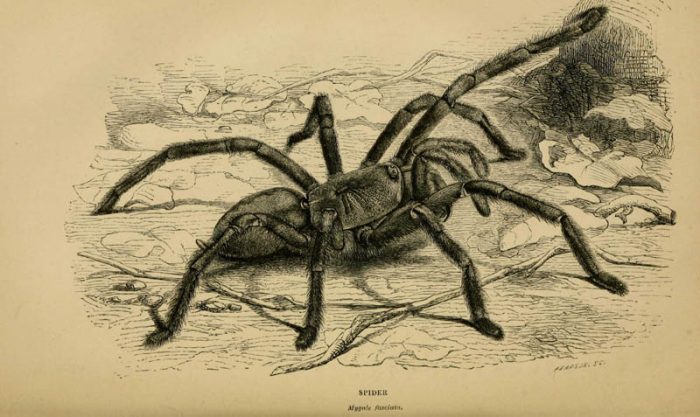
Now at the turn of the trail lived Mrs. Swallow in her house of mud. Mrs. Swallow was a great friend of Asthon nasjaie. As Hosteen mahie passed her house, and knowing that Mrs. Swallow was a great friend of Asthon nasjaie, he thought that maybe she had overheard him planning to kill the spider boy and had told Asthon nasjaie. This made him angry with Mrs. Swallow. When he reached the top of the ridge, he called back to her, saying, “Tosh chosie choie—You ugly swallow with your big, wide face!”
Mrs. Swallow paid no attention to the names that Hosteen mahie called her, but called up to him, saying, “Come down, Hosteen mahie, and visit me.”
Asthon nasjaie, hearing the commotion, went out and, hearing Mrs. Swallow calling for Hosteen mahie to come down, she also called up to him and told him to come down sometime and visit her. Hosteen mahie started back down the trail, meaning to get even with all of them.
Now when Hosteen mahie started back down the trail, Asthon nasjaie called out to the little gray spider and the big black spider and told them to go out on the trail and weave snares to catch Hosteen mahie, “for he was getting too angry.”
The little gray spider climbed the face of the cliff on one side of the trail, and, when he came to the first turn where Mrs. Swallow lived, he wove a web in the shape of a bag, so that Hosteen mahie, when he came back, would get in it. The big black spider wove a snare at the third turn in the trail. The swallows and spiders came out with a lot of knives and spears to meet Hosteen mahie.
Hosteen mahie came down the trail and, when he saw all the swallows and spiders gathered with their spears and knives, laughed at them. He said, “You can do nothing to me; you are not fast enough or strong enough. See how strong my legs are.” And he danced back and forth on the trail before them to show them how strong he was. He was shouting at them all the while, thinking to scare them, but the swallows and spiders went on toward him. They were not a bit afraid.
Hosteen mahie went on down the path and, when he reached the bottom, turned and started back, thinking he had scared them all away. But the swallows and spiders followed him. When he came to the first turn, he ran into the snare that one of the spiders had built. He struggled and struggled and finally broke lose. He ran on to the next turn in the trail and ran into another snare, which was simply a loop hung over the trail, and it caught him. But he managed to break through, and it caught him on the tip of his tail where it hung and looked like a white tip. This is there to this day and makes the white tip on the coyote’s tail. He ran on to the last turn in the winding path, and there he ran into the snare the little gray spider had woven. He began to struggle and struggle, with all his might, but he could not work loose.
Hosteen mahie had just managed to work his nose through when the swallows and spiders came up. There were many of them, and they caught hold of his feet and tied them. The spiders said, “Now we will kill you.”
Hosteen mahie did not seem a bit afraid, and he said, “Go ahead and kill me.”
The swallows and spiders picked up rocks and threw them at Hosteen mahie, hitting him in the head and killing him. The swallows then took out their skinning knives, skinned him, and spread the skin out on the ground. They cut the skin in strips and made hats of it. At that time, the coyote had a white coat, and the strips that the swallows cut to make their hats is the reason the swallows today have a white strip across their heads. They took some of the skin that was on the breast and made vests of it, and that is why the swallows have white spots on each side of their breasts.
At that time, the coyotes’ eyes were of jet. When the swallows and spiders took them out, they broke, so the swallows took the broken pieces and said, “We will take these home, mix them with mud, and make our houses.” And that is why the swallows’ nests have little black specks in them. The swallows then turned to the spiders and said, “Let us have some of your web to fasten our houses to the rocks.”
The spiders replied, saying, “Alright, our friends, you may have what web you need.” So that is the reason the swallows’ nests will stick to the side of the cliff.
All this time, Hosteen mahie lay dead. After the swallows and spiders left, the Hummingbird and the Owl came along and, seeing Hosteen mahie lying dead and stripped of his coat, stopped in astonishment. The Hummingbird turned to the Owl and said, “My friend, are you going to let Hosteen mahie stay dead?”
The Owl replied, saying, “You may do as you please, but I think we might make him over. His white coat now belongs to the swallows, and they have his jet eyes to use in their houses, but I can get some gum from the trees over there and make him some yellow eyes.”
The Hummingbird said, “That will be fine to make his eyes of yellow gum. Hurry, and let’s make him live again.”
The Owl replied, saying, “I will go for my medicine bag.” He flew away and soon returned with the bag, which was made from the stomach of a rabbit, the stomach of an eagle, the stomach of a beaver, and the stomach of a blue fox.
The Swallow came back and said, “I killed him, although I had nothing particular against him, so I will give him my most precious possession.” This was a very beautiful white feather that he carried over his heart. It was the feather of a large black and white bird, and it had the power to keep away all evil.
The Owl took the feather and, going in front of Hosteen mahie, held it to his nose and gave the Yei yell, “O-he-ho-ho-oe.” Then, going to the tail of Hosteen mahie, he gave the call of the crane: “To-to-to-to-ta.” His head began to move a little, and his tail also began to move. The Owl then went to one side of Hosteen mahie and gave his own cry, which was “Wa wah-waaha.” Then he went to the other side and gave the call of the Whippoorwill: “Whip-poor-will.”
Hosteen mahie now came to life, and the Owl stood him on his feet and led him to the hole of the Badger and told him to go in. The Badger met him and gave him a coat of his to wear. And this is why coyotes now have a brown coat like the badgers and not the beautiful white coat and nice black eyes. The only beautiful thing he now has is the nice, soft fur on his breast, which is the feather the Swallow gave him.
The Coyote Path
A True Story By Wolfkiller
Just before the time of the harvest, I was out hunting my horses when Grandfather rode up. He said that some people from the top of the mountain had come and asked him to prepare a medicine chant. They had gone back home that morning with his medicine bag, and he had promised them that he would leave on the fourth day. He asked me to gather certain plants for him and to accompany him to the ceremony. I said that I would.
After I found my horses and took them in, I went out to gather the plants. It took me three days to find all of them.
We started our journey early on the day that Grandfather had promised to leave. After we had ridden only a short way, a coyote crossed our trail. He came from the north of the trail and crossed it diagonally. Grandfather asked me to watch very carefully to see if any more coyotes crossed in front of us. We rode along for some distance before we saw any more of them, and then we saw another one cross our trail. This time he came from south of the trail and crossed diagonally, going toward the north. Grandfather began to look worried, but rode along quietly.
I continued to watch the trail ahead very carefully. We had not gone far before another coyote crossed our trail a short distance ahead. This one also came from the north of the trail and went diagonally across toward the south.
Grandfather immediately stopped and turned back toward our hogan. He did not say a word until we had passed the place where the first coyote had crossed our trail.
After a short distance, he said, “My grandson, you must watch the trail ahead. No matter where you are going, you must never go on after three coyotes have crossed your trail. If they go diagonally across, their tracks are like a streak of lightning, and it is a warning to us that there will be trouble ahead. Now we must wait four more days before we can go to perform the ceremony. We must go to our hogans and stay there until the four days have passed. Then we can go again.”
After the four days, we went to the hogan to perform the ceremony. When we reached it, we explained to the people there why we had not come before. They said they knew something had happened to stop us, and were glad we had not come before. We learned that we could not have performed the ceremony when it was originally planned, because one of the old people of their family had died five days earlier.
The next morning, the sacred fire was built and the ceremony began. The fire must be kept burning until the end of the ceremony, which lasted nine days.

More than thirty years ago, Harvey Leake began researching the history of his pioneering ancestors, the Wetherills of the Four Corners region. His investigations have taken him to libraries, archives, and the homes of family elders whose recollections, photographs, and memorabilia have brought the story to life. His field research has led him to remote trading post sites in the Navajo country and some of the routes used by his great-grandfather, John Wetherill, to access the intricate canyon country of the Colorado Plateau. Harvey was born and raised in Prescott, Arizona. He is a retired electrical engineer. Click here for more articles by Harvey Leake.
To comment, scroll to the bottom of the page.
Zephyr Policy: REAL NAMES ONLY on Comments!
Don’t forget the Zephyr ads! All links are hot!

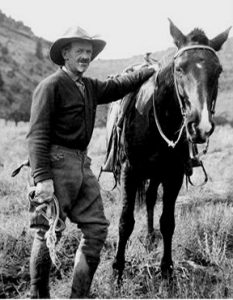



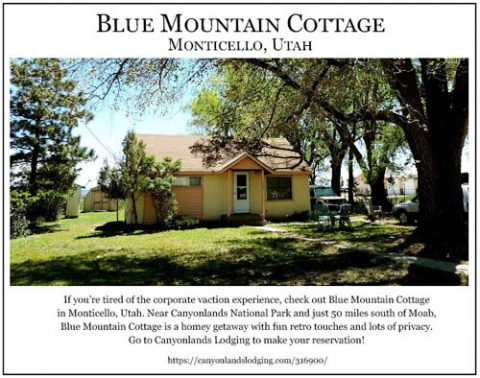
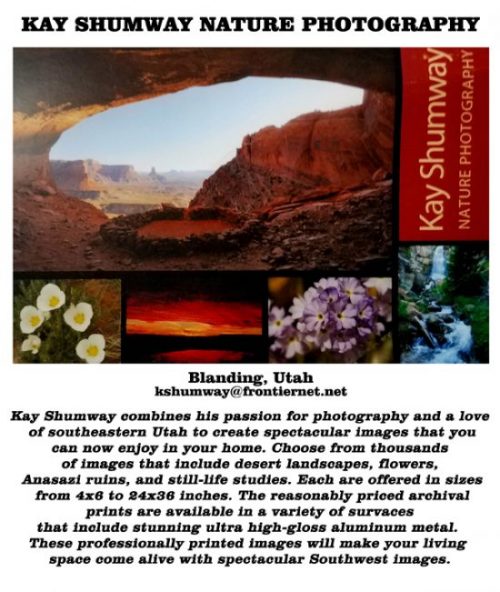
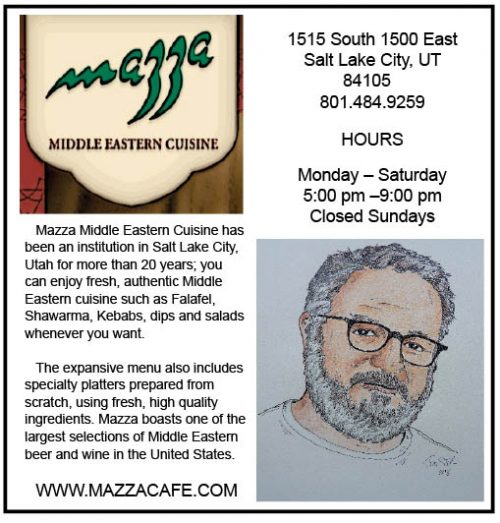
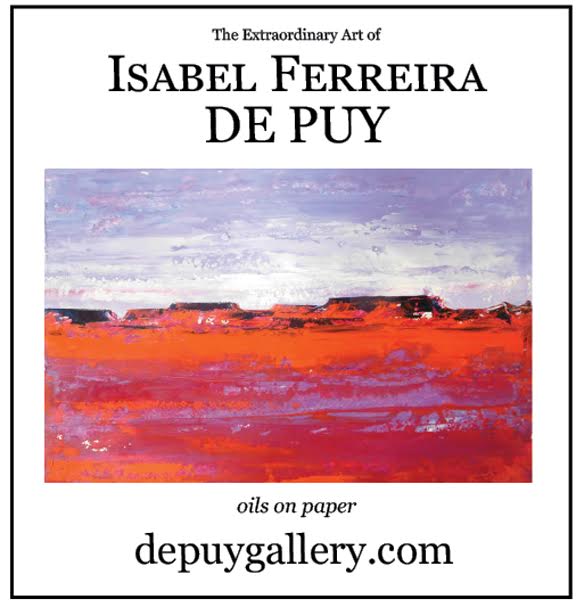
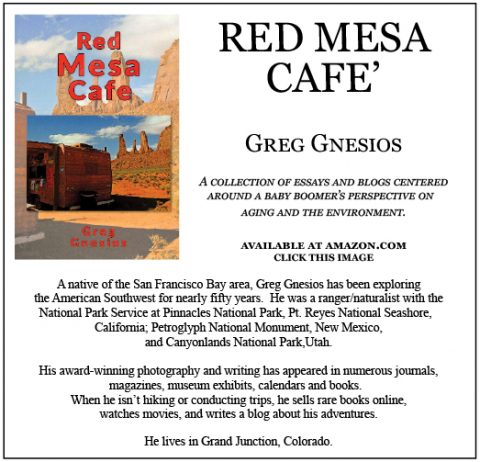
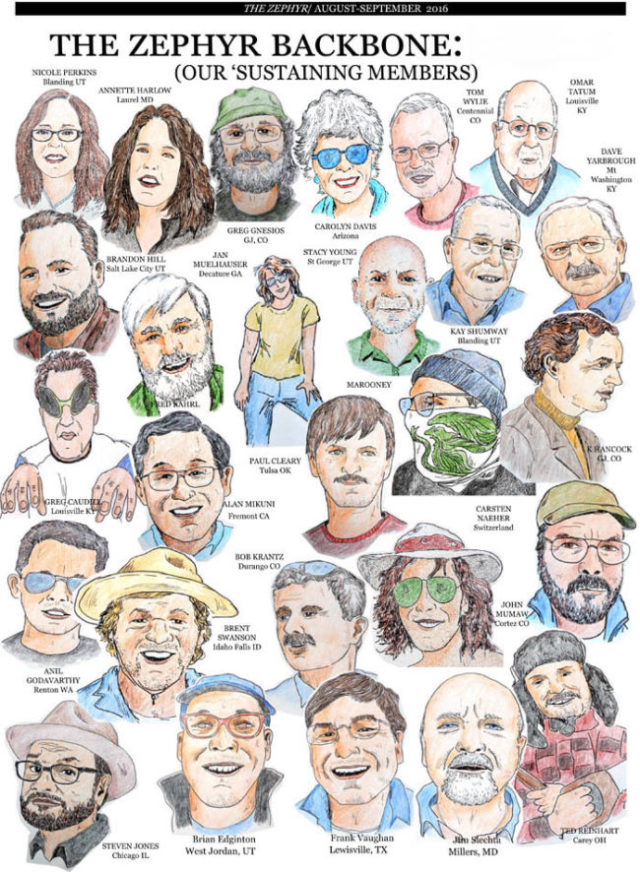
Spooky Navajo tales! Interesting. Thanks
I am currently reading, “Cowboys and Cave Dwellers” by Fred Blackburn and Ray Williamson. There are many good pictures and very interesting information about the Wetherills in this book. Chapter 3 is entitled, “The Wetherills in Grand Gulch”. Having once hiked Grand Gulch, I found the book to be fun to read. I am also interested in follow up history of the family. Thanks for publishing these stories.